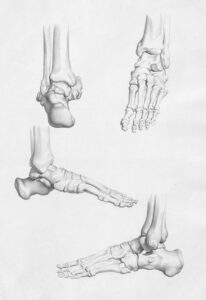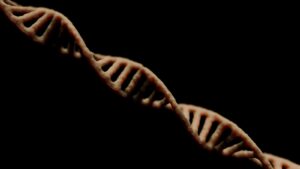Throughout human history, deadly diseases have shaped the course of civilizations, wiping out millions and altering the trajectory of cultures. From the Black Death to smallpox, pandemics have left their mark on humanity. However, amidst these devastating outbreaks, there have always been individuals who seem mysteriously untouched—those who survive without falling ill, even when surrounded by infected populations. These individuals possess a rare and fascinating trait: natural immunity to specific diseases.
Natural immunity to deadly diseases is not a superpower but a product of complex biological factors, including genetics, evolutionary adaptations, and unique immune system responses. Understanding how and why some humans are naturally resistant to certain pathogens can shed light on the mechanisms of immunity and inform modern medical advances. In this article, we explore the science behind natural immunity, the conditions it protects against, and the remarkable individuals who have shaped our understanding of this phenomenon.
The Science of Natural Immunity
Natural immunity refers to the inherent ability of certain individuals to resist infection or the severe effects of specific diseases without prior exposure or vaccination. Unlike acquired immunity, which develops after encountering a pathogen, natural immunity is typically encoded in a person’s genetic makeup or linked to unique biological processes.
The immune system, a highly sophisticated defense network, plays a central role in natural immunity. It consists of two main components: the innate immune system, which provides the body’s first line of defense, and the adaptive immune system, which learns to recognize and combat specific pathogens over time. Natural immunity often arises from the innate immune system, though it can also involve genetic mutations that enhance or alter immune responses.
Genetic Mutations and Disease Resistance
Many cases of natural immunity can be traced back to specific genetic mutations that protect individuals from particular diseases. These mutations often result from evolutionary pressures, such as historical epidemics, which favored the survival of individuals with advantageous traits. Below are some of the most well-known examples of genetic resistance to deadly diseases.
1. HIV and the CCR5-Δ32 Mutation
One of the most famous examples of natural immunity is the CCR5-Δ32 mutation, which provides resistance to HIV. This mutation affects the CCR5 receptor, a protein on the surface of white blood cells that HIV uses to enter and infect cells. Individuals who inherit two copies of the CCR5-Δ32 mutation (one from each parent) lack functional CCR5 receptors, rendering them nearly immune to HIV infection.
This genetic mutation is most commonly found in people of European descent, and its prevalence is thought to be linked to historical selective pressures, such as exposure to diseases like smallpox or the bubonic plague. Researchers believe the mutation may have provided protection against these older pathogens, indirectly influencing its persistence in the population.
2. Malaria and Sickle Cell Trait
Resistance to malaria is another example of how genetic mutations can confer natural immunity. Individuals who carry one copy of the gene for sickle cell anemia (known as the sickle cell trait) are less likely to develop severe forms of malaria caused by the parasite Plasmodium falciparum. The abnormal shape of their red blood cells makes it more difficult for the parasite to survive and reproduce.
This trait is particularly common in regions where malaria is endemic, such as sub-Saharan Africa, the Mediterranean, and parts of South Asia. While carrying two copies of the sickle cell gene can lead to the debilitating condition sickle cell anemia, having one copy offers a protective advantage against malaria.
3. Tuberculosis and Tay-Sachs Carriers
Some genetic conditions associated with disease resistance are less well-known. For example, researchers have suggested that carriers of the gene mutation responsible for Tay-Sachs disease may have increased resistance to tuberculosis. This theory is based on the high prevalence of Tay-Sachs carriers in certain populations historically exposed to TB, such as Ashkenazi Jews. While the exact mechanism remains under investigation, it highlights the potential role of genetic mutations in shaping immunity.
Evolutionary Adaptations to Pathogens
Natural immunity often results from evolutionary adaptations that occurred over thousands of years. As humans encountered new pathogens, individuals with traits that conferred resistance were more likely to survive and pass these traits to their offspring. Over time, this process of natural selection has shaped the genetic landscape of human populations.
For example, the high prevalence of the CCR5-Δ32 mutation in European populations may reflect an evolutionary response to the Black Death or other epidemics that ravaged Europe during the Middle Ages. Similarly, the sickle cell trait is thought to have become widespread in malaria-endemic regions due to its protective benefits against the disease.
These adaptations highlight the dynamic relationship between humans and pathogens, where both parties exert selective pressures on one another. Understanding these interactions provides valuable insights into the origins of natural immunity and the ongoing arms race between humans and infectious agents.
Innate Immune System Superstars
While genetic mutations are a major factor in natural immunity, some individuals possess unusually robust innate immune systems that allow them to fend off infections more effectively than others. These “super responders” are rare but provide important clues about how the immune system functions.
Natural Killer Cells
One key component of the innate immune system is natural killer (NK) cells, which play a crucial role in identifying and destroying infected or cancerous cells. Some individuals have NK cells that are more efficient at detecting and neutralizing threats, giving them a natural advantage against certain diseases.
For example, researchers have identified individuals who are naturally resistant to cytomegalovirus (CMV), a common virus that can cause severe complications in immunocompromised individuals. These people have highly active NK cells that prevent the virus from establishing a foothold in the body.
Interferons and Viral Resistance
Another important aspect of innate immunity involves interferons, signaling proteins that help the body mount an antiviral response. Some individuals produce higher levels of interferons or have more effective interferon signaling pathways, making them better equipped to combat viral infections like hepatitis C or influenza.
Real-Life Examples of Naturally Immune Individuals
The phenomenon of natural immunity is not just a scientific curiosity—it has been documented in real-life cases that demonstrate the extraordinary resilience of the human body. These individuals provide valuable insights into the mechanisms of immunity and inspire ongoing research into potential treatments and vaccines.
“The Berlin Patient” and HIV Resistance
One of the most famous examples of natural immunity involves Timothy Ray Brown, also known as “The Berlin Patient.” Brown was the first person to be cured of HIV after receiving a bone marrow transplant from a donor with the CCR5-Δ32 mutation. The procedure not only treated his leukemia but also eliminated HIV from his body, highlighting the power of genetic resistance in fighting the virus.
People Naturally Immune to COVID-19
During the COVID-19 pandemic, researchers identified individuals who appeared naturally immune to the SARS-CoV-2 virus. Some of these individuals were asymptomatic despite repeated exposure, leading scientists to investigate the role of T-cells and pre-existing immunity from exposure to other coronaviruses.
Studies revealed that certain people had “cross-reactive” T-cells that recognized SARS-CoV-2 due to prior encounters with common cold coronaviruses. This discovery underscores the complexity of immune responses and the potential for natural resistance to emerging pathogens.
Implications for Medicine and Public Health
Understanding natural immunity has profound implications for medicine and public health. By studying individuals who are naturally resistant to diseases, researchers can identify new strategies for preventing and treating infections. Below are some key areas where this research is making an impact:
1. Vaccine Development
Natural immunity can provide valuable insights into vaccine design. For example, understanding how the CCR5-Δ32 mutation protects against HIV has guided efforts to develop HIV vaccines that target the virus’s entry points. Similarly, studying the immune responses of people resistant to COVID-19 has informed the development of more effective vaccines and booster strategies.
2. Personalized Medicine
The study of genetic mutations linked to disease resistance is paving the way for personalized medicine, where treatments are tailored to an individual’s genetic profile. For instance, identifying patients with specific immune traits can help doctors choose the most effective therapies or predict their risk of severe disease.
3. Gene Therapy
Gene-editing technologies like CRISPR are opening new possibilities for replicating the effects of natural immunity. Scientists are exploring ways to introduce protective mutations, such as CCR5-Δ32, into the genomes of at-risk individuals to confer resistance to diseases like HIV.
The Ethical Questions Surrounding Natural Immunity
While the study of natural immunity offers tremendous benefits, it also raises important ethical questions. For example, should genetic information about disease resistance be used to prioritize certain individuals for treatments or vaccines? How do we ensure that advances in gene therapy are accessible to all, rather than limited to a privileged few?
These questions highlight the need for careful consideration of the social and ethical implications of natural immunity research, ensuring that its benefits are distributed equitably and responsibly.
Conclusion
Natural immunity to deadly diseases is a testament to the resilience and adaptability of the human body. Whether driven by genetic mutations, evolutionary pressures, or unique immune system traits, this phenomenon provides a window into the complex interplay between humans and pathogens. By studying the mechanisms of natural resistance, researchers can unlock new approaches to combating infectious diseases, from developing life-saving vaccines to pioneering innovative gene therapies.
As we continue to uncover the secrets of natural immunity, we gain not only a deeper understanding of our biological defenses but also hope for a future where deadly diseases are no longer an inevitability. These remarkable individuals remind us of the untapped potential within the human genome and the enduring strength of the human spirit.




